Note: This is ME and Perplexity AI brainstorming, making up what the late George Carlin (1937-2008) might have delivered in a Square Wheels Workshop for senior managers. I just used AI to create Carlin’s own perspective, since it knows my tools and it knows Carlin’s work. Just imagine him, with his wit and observational skills, to put a workshop together. The goal — impacting people and performance,
I’ve been playing with Perplexity and asking it how different comedians might use the Square Wheels® image to do some on-stage comedy or, in this case, even lead a senior manager, executive development leadership workshop.
George’s Opening Remarks
The Square Wheels Metaphor and how we think about how things really work
Challenging the Status Quo
Leadership and Communication
Help your people get out of the ditch and up on the road and remember,
there are two kilometers of ditch for every kilometer of road.
Get them talking about possibilities for improvement.
Dis-Un-Engaging Employees
And he would add: “Your employees are the ones feeling every bump and jolt of all those Square Wheels. They know where the problems are. But if you’re too busy playing ‘big important boss’ to listen, you’re missing out on a gold mine of ideas. And even ONE round wheel would make a difference to them.”
BOSS spelled backwards is self-explanatory.
Bosses are seldom listening or hands-on with their people.
Bosses aren’t coaches and mentors.
But it is not all him talking. Much of what Carlin would actually DO in his workshop is ask for ideas, ask about best past implementation practices, and generally ask these leaders how they could lead differently to impact innovation and productivity, because he knows their active involvement is the only thing that will develop ownership.
Ask, and Ye shall Receive!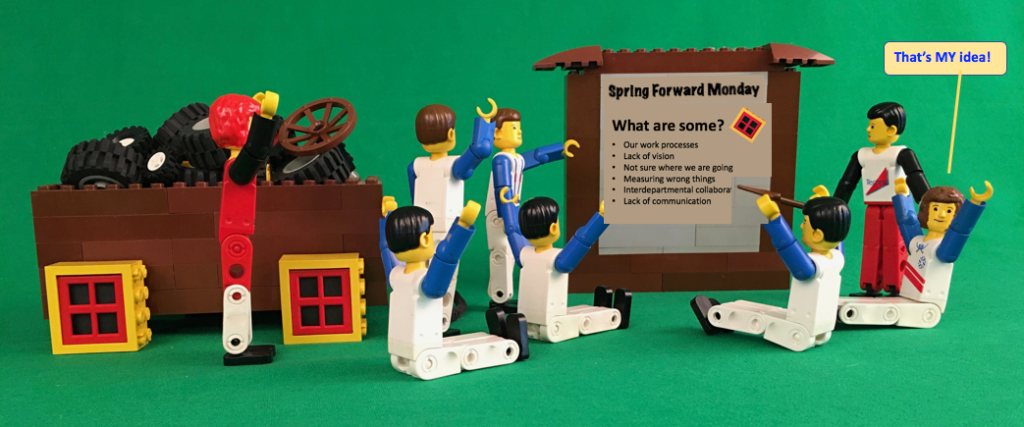

Asking for round wheel ideas is a key step in implementing round wheel ideas for improvement
Implementing Change
General Thoughts on Using Square Wheels Images for Better Engagement and Innovation
-
Visual Storytelling: The Square Wheels images provide a powerful, engaging visual metaphor that you and your managers can use to illustrate complex organizational issues in a simple, relatable way. By using these images, your managers can create a shared language of performance improvement and understanding with their teams, making it easier to discuss challenges and opportunities.
-
Interaction Activities: Managers can use the Square Wheels images as an innovation discussion-generator at the beginning of team meetings or brainstorming sessions. Ask team members to identify “Square Wheels” in their own work processes, encouraging open and honest communication about inefficiencies. They WILL talk about issues and opportunities, and note that there is no blame associated with who started all this Square Wheel stuff.
-
Problem-Solving Workshops: Organize brainstorming and improvement-focused workshops where teams use the Square Wheels concept to identify issues and potential solutions (round wheels) in their departments. This approach can make problem-solving more engaging and less threatening and is especially useful for inter-departmental kinds of discussions because using the images and metaphors help dissolve defensiveness.
-
Continuous Continuous Improvement Culture: Use the Square Wheels metaphor to foster a culture of continuous continuous improvement. Encourage team members to regularly identify “square wheels” in their work and propose “round wheel” solutions. The Round Wheels of today become The Square Wheels of Tomorrow.
-
Change Management Tools: When introducing new processes or systems, use the Square Wheels metaphors and images to help employees understand why change is necessary and how it can benefit them and the organization. See the article, “Teaching the Caterpillar to Fly” for real ideas around managing and leading change
-
Feedback Tools: Create a “Square Wheels to Round Wheels” suggestion system or use an AI digital platform where employees can anonymously submit ideas for improving processes and even analyzing potential impacts. One department’s Square Wheel generally affects other departments’ operations. But, generally, they need to feel motivated to even try to suggest what can be done differently; they need the active engagement driven by their manager.
-
Performance Reviews: Consider incorporating the Square Wheels metaphor into performance reviews, asking employees to identify their own issues and discuss how they plan to “round” them. Using the metaphor generally avoids anything that might be perceived as a personal attack, especially when the participant is suggesting their ideas.
-
Leadership Development: A high impact, culture-wide approach is to use the images, metaphors and language in leadership training to help managers understand the importance of listening to their teams and being open to new ideas. It makes for some very easy and effective facilitation training, which is what will better involve and engage people in workplace improvement and personal growth / coaching. Embed these ideas into your AI-driven project management tools.
-
Cross-Departmental Collaboration: “Interdepartmental collaboration” remains an oxymoron for so many organizations and silos and mud seem to be commonplace. Use the Square Wheels concept to facilitate discussions between different departments, helping them identify how they might be creating “Square Wheels” for each other and how to collaborate more effectively to help implement more round ones. There are lots of cross-functional round wheels that can be implemented to get departments more aligned and to make solutions more effective, overall.
By using the Square Wheels images and metaphors, your managers can create a more engaging, inclusive, and innovative work environment. The visual nature of the concept makes it an accessible, useful visual model about improvement to all employees, regardless of their position or background, and provides a non-threatening way to discuss organizational challenges and improvements.

If It Is To Be, It Is Up To Me! Let’s work to make people more successful.
—
For the FUN of It!

Dr. Scott Simmerman is a designer of team building games and organization improvement tools.
Managing Partner of Performance Management Company since 1984, he is an experienced presenter and consultant who is trying to retire!! He now lives in Cuenca, Ecuador.
You can reach Scott at scott@squarewheels.com
Learn more about Scott at his LinkedIn site.

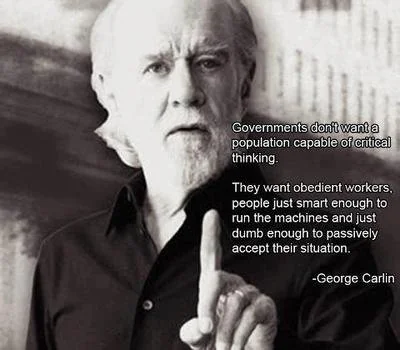





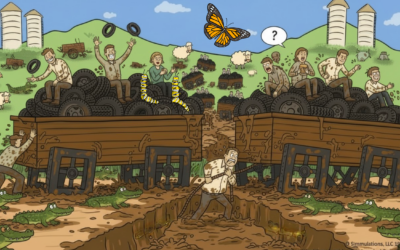
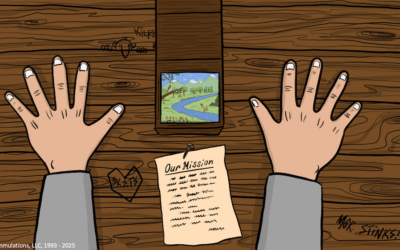
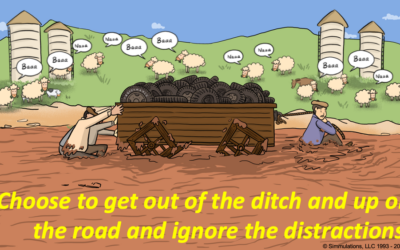
0 Comments